The history of Kaapsehoop in Mpumalanga South Africa and information on the 1873 gold rush
|
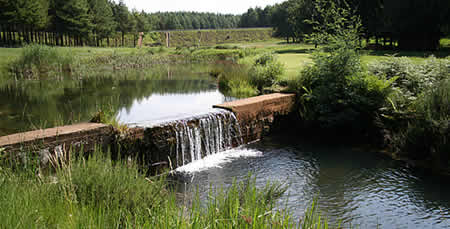
|

 For more info For more info
|
GOLD DUST TRADING
All sorts of Antiques Art and Collectables Hidden away in a Magical Antique Shop in the Heart of Kaapsehoop. We Buy and Sell Antiques and Vintage Goods.

ON ALL CLOTHING |
 |

Ingrid Murphy
082 835 2314
E-mail:
ingridgolddust@gmail.com
ADDRESS
Main Street Kaapsehoop, Kaapschehoop, Mpumalanga, South Africa
|
|
VIEW MORE INFO
|
| |
KAAPSCHE HOOP
Compiled and written by Louis-John Havemann
"I have to a large degree relied on the writing of T.V.Bulpin amongst others for my information
as well as being given permission to utilise the research of Dr Steven Evans of Avitourism Africa and African Photographs.
email lj-tours@iafrica.com " |
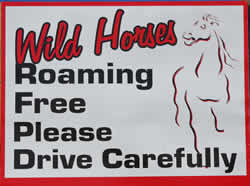
|
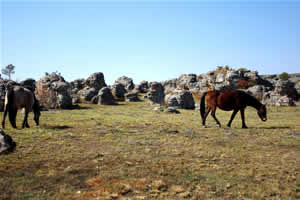 |
|
| |
Where the coastal plains of the Lowveld meet the Drakensberg escarpment between Hoedspruit and Hazyview, the change is quite sudden and dramatic with the ramparts of the Drakensberg Escarpment towering over the Lowveld, providing breathtaking views like Wonderview near Graskop and God's window.
Between Barberton and Swaziland in the south, to White River and Nelspruit in the north, you have a somewhat different transition from the Highveld to the Lowveld.
The solid looking escarpment is riven by among others, two rivers, the Crocodile and the Elands.
The Crocodile (Ngwenya or Kwena) descends the escarpment from Lydenburg's side, down Schoemans Kloof and the Elands River falls over the impressive waterfall giving the names to the towns, Waterval Boven (Above the falls) and Waterval Onder (Below the falls).
These two rivers join up at Montrose and flow on as the Crocodile River past Nelspruit through the Crocodile Gorge and on to Komatipoort, then through the Lebombo range to Mozambique. South of the Crocodile River the escarpment juts out in the form of a Cape.
Right at the top of this Cape of the escarpment, lying at 6000 ft above sea level, is perched the picturesque little hamlet of Kaapsche Hoop, on the edge of what is known as the Ngodwana Plateau.
To the south of this cape there is a valley wherein lies the town of Barberton and this valley was given the name De Kaap Valley or more sinister yet “The Valley of Death”.
The Kaap Valley has numerous rivers running through it, like the Ngwenyana (Little Crocodile River), Noordkaap River, Suidkaap River, Queens and others.
These rivers have over the ages eroded the Kaap Valley and formed a kaleidoscope of numerous little ravines all covered by bushveld, harbouring a variety of various mineral and semi precious stone deposits, from as far back as the prehistoric Achaean Age, known as the "Barberton Greenstone Belt".
These eventually all join up and run through the mountains to join the Crocodile River at Kaapmuiden. |
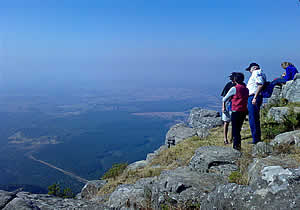
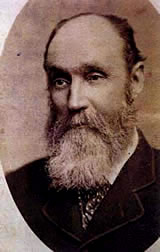
TOM McLACHLAN |
|
There were signs of diggings by the Ancients in this whole area. They are attributed to originally having been the work of the Karanga tribe, later followed by a Sotho tribe, thought to have been an offshoot of the Kangonane tribe. The Sothos were later wiped out, or driven out, by Swazi raiding parties who eventually established a military base on the banks of the Ngwenyana River, named Mjindini.
The well known digger Tom McLachlan, after finding payable gold at Mac Mac, found traces of gold in the Valley of Death and surrounding areas including Kaapsehoop, although this has not been fully substantiated, but nothing he found was a payable proposition.
This name"Valley of Death" was given to it because of the very high deadly incidence of Malaria occurring there in the early days of the Diggers, as well as the presence of the dreaded Tsetse fly which brought death to livestock and people caused by the parasitic disease, Trypanasomiasis, known as "Nagana" in livestock or "Sleeping Sickness" in humans.
|

|
When David Benjamin bought and obtained the concessions at Pilgrims Rest in 1881, preventing the Diggers from prospecting on his concession lands, the angry and frustrated diggers eventually moved towards The Valley of Death and Kaapsehoop, in the hopes of finding gold there.
It is told that Charlie the Reefer was the first prospector to find traces of the "Rotten Reef" or Banket reef, which was the gold bearing reef, so named because it resembled a caramelized Dutch dessert of the same name, on the farm Berlyn, adjacent to what is now Kaapsehoop.
There is another story that gives a digger named Bernard Chomse, the credit for being the first to find gold in 1881, in a stream bed near to Kaapsehoop which was then named "Duiwel's Kantoor".
The name "Duiwels Kantoor" or "Devil's Waiting Room" came from the outcrop of strangely formed rocks said to look like monsters waiting for the devil (See photo above left).
This name did not last very long.
The name Kaapsche Hoop has been spelt in various ways, like Kaapsehoop or
Kaapse Hoop but it is accepted that the official name given to this village is spelt
Kaapsche Hoop. |
Some of the Characters of Kaapsche Hoop and the gold rush
I doubt that a more cosmopolitan assembly of people, sharing such diverse skills and talents, encompassing such a broad spectrum of human strengths and weaknesses, emotions and wills has ever been assembled in such a remote and beautiful setting as the Transvaal Republiek gold rush.
Let us learn about these colourful players and their contribution to Kaapschehoop history.
Of necessity I have to try and deal with them "One by One" .
Click on a name below for more details
Stafford Parker Gunn of Gunn Evan Davies
|
STAFFORD PARKER
One of the more sober and respectable figures of Kaapsehoop was Stafford Parker who later ended up in Barberton as a friend of the famous Cockney Liz. He was recognizable by his white top hat and was an auctioneer and claim agent.
He jumped ship bound for the Crimea after wounding a French officer in a duel and then boarded another ship for Cape Town. He then moved to Colesburg where he married a Miss Sloan and had 14 children. He also served with the Cape Mounted Rifles.
There is a persistent inaccurate story that he first became known in South African history when he was elected, on 30 July 1870, as the President of the Diamond Diggers Republic, at the alluvial diggings of Klipdrift (now Barkley West).
There is a design of the Diggers Republic flag showed the Union Jack in the top right hand corner and a large rearing horse in the centre. This flag was said to have flown daily in the front of the Presidency building.
The only known record of this flag is a painting by W McGill, which is in the Africana Museum in Johannesburg. |
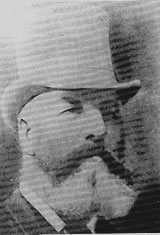
|
We now know that this is a myth thanks to Hans Bornman.
When alluvial diamonds were found at Hopetown, before the dry diggings at the later Kimberley Diamond Field was established, there was no real Law & Order in the area. This area was subject to all sorts of disputes and various land claims by the Transvaal Republic, The Orange Free State Republic, |
The British Cape Colony and the Griquas under Nicholaas Waterboer. In this absence of any form of governmental control, the predominantly British Diggers drew up a code of rules to regulate and manage their affairs on these diggings. Given the fact that all these various claims were lodged on this area, the diggers at Klipdrift the apparent centre on the diggings, established what they termed a "Mutual Protection Association" with Stafford Parker, who had been trading in the area, as their Commandant.
|
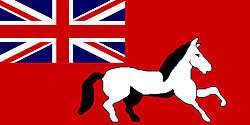 |
Parker was a former seaman in the Royal Navy, a merchant seaman and a painter; he was also at this time a prominent general dealer and owner of a music saloon in Klipdrift.
After a British magistrate had been sent to Klipdrift as well as the aftermath of a very bad flood in December 1870, a lot of diggers moved to the dry diggings at what later became Kimberly. Here Parker opened another store and music saloon.
|
|
|
Parker moved from the Diamond Fields to Lydenburg, where he opened the Masonic Hotel. He was also elected to the Transvaal Republic Volksraad (equivalent to the House of Assembly) as the representative for Lydenburg.
Stafford Parker then moved to Kaapsehoop where he established himself as an auctioneer and a claim agent. His appearance was always dignified and well dressed recognizable by his white top hat and in keeping with the image of a former president.
When the Barrett brothers, Benjamin and Charles bought the farm Berlyn and exercised their concession rights, Parker along with most of the other diggers and storekeepers at Kaapsehoop left for Barberton.
CLICK HERE FOR MORE .
After the Barberton gold boom he eventually settled in Johannesburg where he died 15 March 1915.
I have had the privilege to meet Stafford Parker's great grandson Bill Ashton of Nelspruit. |
|
"Gunn of Gunn" Lord of Farquhar
One of the incredible characters to have found his way to South Africa, the Transvaal and also Kaapsehoop, was a handsome thirty six year old man, who claimed to be a Highland Laird (Lord), called Charles Grant Murray Somerset Stuart Gunn. The title he claimed for himself was "Gunn of Gunn, Lord of Farquhar". The story he told, was that at the age of sixteen he was enlisted as a member of the 13th Hussars but later he had to flee to South Africa to escape being sentenced, after killing a man in a duel.
Gunn had a silver slippery tongue and told all and sundry that he had been awarded, the Victoria Cross as well as the Iron Cross, for bravery, resulting from various military actions that he claimed to he have been involved in. He also gave out that he was on first name terms with various members of the British aristocracy and he had cultivated an air of importance about him.
On the 16th May 1876 The Transvaal Republic under President Francois Burgers declared war on the Pedi tribe under their leader Chief Sekhukhune. The Pedi were raiding the farmers' cattle and even supply transport was disrupted causing the diggers at Pilgrims Rest to demand that something had to be done. The final straw was when Sekhukhune's half brother Dinkwanyane, living near Lydenburg, seized a wagonload of timber destined for Pilgrims Rest from a man called Jankowitz and sent him packing.
The whole Transvaal Republic’s attempt to subdue the Pedis was a calamitous debacle of note. Not only were the Burghers of the Republic unwilling to go and fight but there was also a propaganda campaign against President Burgers, falsely accusing him of all sorts of untruths, like being a Free Mason and an Anti Christ. These claims even though they were untrue were horrific and made him out to be unacceptable to a lot of the religious but very conservative almost narrow minded Dopper members of the Transvaal community.
Burgers was finally able to muster about 300 men who were split into two factions, the hard drinkers and the very conservative religious members.
Their first task was to capture a chief named Mathebi who was responsible for many cattle raids. Mathebi was well ensconced in a rocky stronghold with many caves and places of concealment. During this engagement one of Burger’s men, a German named Schadler threatened to shoot the president for which he was later court martialed. Another man named J.H.Viljoen deserted and joined Mathebi as his secretary and adviser. Finally after 2 days Burger’s force finally managed to capture the stronghold, resulting in the burning of some 300 huts.
The next attack was to be against Dinkwanyane. Burgers was re enforced by more men under the ex-president M.J.Pretorius and 2500 Swazi warriors led by Matsafini. The Swazis carried the day and Dinkwanyane was killed and most of his people put to death by the Swazi warriors. They then withdrew with a huge haul of looted cattle and a very poor opinion of the Transvaalers who they regarded as cowards.
Burgers now led his force to attack Sekhukhune’s fortress of Mosego but failed dismally and consequently the commando force melted away as men deserted and returned to their homes.
Burgers returned to Pretoria to much acrimonious retribution and blame. The Transvaal was in pandemonium and the Pedis were now freely raiding and cattle were being stolen all over the country. Even Nellmapius or “The Count” as he was called, had his transport business completely brought to a standstill. His black workers deserted and two of his transport station managers were murdered. All work was brought to a standstill with the cost of living soaring as no new supplies were coming in to the small towns in the area.
The news that the Republic had been beaten by a small African tribe resulted in the overseas loan for his railway line from Delagoa Bay to Pretoria collapsing and all faith in the Transvaal Republic was lost.
President Burger’s first priority was to defeat the Pedi and he raised a band of mercenaries called the Lydenburg Volunteers with a German holder of the Iron Cross, a Captain Conrad Hans von Schlickman who was a survivour of the Franco-Prussian War in command. von Schlickman died in a raid against the Pedi after receiving a bullet in the stomach. This led to a major quarrel as to who should be the new leader. There was an Irishman named Alfred Aylward who had recruited some volunteers from Kimberley, and he, amidst violent quarrels, seized command by taking control of the magazine and driving his rivals out of Fort Burgers, which is situated at, today’s town of Burgers Fort.
Aylward’s command was confirmed in December of 1876 by the Volksraad in Pretoria.
By mid December Aylward’s greatest rival appeared on the scene, none other than the erstwhile Gunn of Gunn.
Gunn had arrived in Pretoria with 22 recruits for the Lydenburg Volunteers. He had them outfitted in blue tunics similar to those worn by the Hussars, with caps, knee breeches and stockings.
He drilled them in public in the Pretoria market square every day which impressed all and sundry including President Burgers. He had two attendants with him constantly as well as a Scottish piper named Grant. Gunn entertained guests in his Pretoria Hotel nearly every night with the piper marching up and down outside of the hotel to the skirl of his pipes, almost as a manifestation of how important his master was.
Some more men were recruited and eventually Gunn and his “Gunn Highlanders” left for Lydenburg and the Sekhukhune war. Their journey was marked by the atrocious and debauched behaviour of this company of rabble who caused all sorts of problems, resulting from their drinking habits. They incurred the wrath of the farmers on the way by stealing their fruit, poultry, stock and molesting their daughters at every opportunity that they could find.
Gunn and his party stopped over in Lydenburg for a while. Here he, in typical Gunn of Gunn fashion, loved to pay social call visits to the ladies of the town. On these occasions, as he did in Pretoria, Gunn would have Grant his piper all dressed up in his kilt walking before playing his bagpipes and then have Grant march up and down outside for the duration of his social visit.
Grant apparently did not see a flight of steps in the dark and as a result fell down these stairs amid the loud cacophony of bagpipe skirls gone wrong, ending in silence when Grant finally burst the bag with his head. This put a welcome end to the bagpipe noise for quite some time.
Gunn spent Christmas in Lydenburg and people were starting to question his credibility because he seemed to be dragging his heels getting to the front. He eventually left for Fort Burgers having told all and sundry that he had been appointed as the commander by President Burger. During their stopover at Krugerspos the Gunn Highlanders conducted themselves in their usual ill disciplined fashion and a number of these men were arrested for their riotous behaviour. This behaviour had gone on well ahead of him as well as his fictitious claims of appointment by the president.
Aylwood, who had been long expecting Gunn, had made contingency arrangements and when Gunn and his Highlanders arrived, he ran a cannon out confronting the surprised Gunn and his mob and facing them down. The unruly mob of thugs all surrendered and Gunn and a few of his sidekicks were arrested. There were various charges of public disturbance laid against Gunn and he was sent to prison in Pretoria, which ended the existence of the Gunn Highlanders. The rest of his men were absorbed into the force under Aylward. |
|
Evan Davies
I have been contacted by Evan Davies grand daughters, Colleen de Klerk and Gilda Biassoni,who have let me have photos and information on
Evan Davies. See below. |
The characters of Kaapsche Hoop were not necessarily only the old diggers.
In the small cemetery at Kaapsehoop there lay a forgotten grave. I had seen it some years ago and then could barely make out the inscription.
I paid a visit to Kaapsehoop and the cemetery, to photograph and record the person buried in this apparently forgotten and unkempt grave.
I struggled to find it, as the inscription was all but covered and lost behind lichen and moss growing on the headstone.
There were some other visitors walking through the cemetery and after telling them what I was looking for, I finally found the grave and started brushing away the lichen in order to read the inscription. |
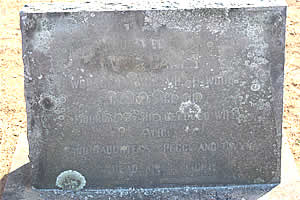 |
The other folk were just as eager as I was, to try and decipher what was written thereon, in order to find the name of the man buried here. Finally after much effort with a short handled brush that I had brought with, we were able to make out some of the lettering. It read something like this;“ Xxxx true Veldman
Evan Davies
Wounded at Delville Wood
Xxxxxxxxxx
Mourned by his wife Alice and
Daughters Peggy & Gwyn
Lead kindly light
We could not make out anymore so I decided to obtain permission to return the following day and try and clean up the headstone in order to read what was written there in its entirety. |
| |
Once I had carefully cleaned up the headstone I was able read the inscription quite clearly.
Notice the spelling of “Welchman”.
This son of Kaapsehoop deserves to have his service to his country remembered once more.
We need to remind ourselves that this man Evan Davies had at the time that he volunteered for service in World War One, written out his personal cheque for his country stating – “I’m prepared to pay up to the following amount, including my life for my country”.
He was wounded, but was one of the lucky soldiers who survived those six days of living hell. |
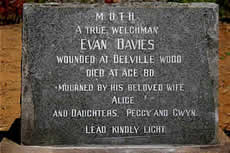
|
None of the visitors knew much about the Battle of Delville Wood, in fact most of them had never even heard of it.
In 1916 during WW1 the wood known as Bois d'Elville situated next to the French village of Longueval and christened 'Devil's Wood' by allied troops, was a major German defensive feature.
On 14th July 1916, 121 officers and 3,052 other ranks, all volunteers making up the 1st South African Infantry Brigade, marched into Delville Wood on the Somme front, with orders to take it and it hold it at all costs. |
| |
The South African Brigade went in after a heavy artillery battle, managing to clear a large portion of the wood of German forces. The North Western section of the wood remained in German hands.
The Wood was badly at the mercy of the enemy’s guns, compounded by the fact that on the north and south-east sides the Germans had strong trench lines, seventy yards from the trees, heavily reinforced with machine guns. The Springbok’s successful attack had been unbelievable, but their defense was an even greater effort.
During the last two and a half days they hung on without food or water, except for what they could scrounge from their dead comrades and the enemy dead, while their ranks were decimated, yet they managed to repulse the elite Brandenburg corps of the German Fifth Division.
|
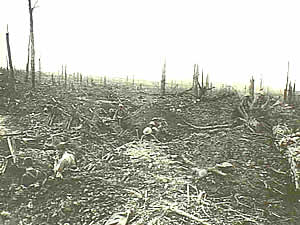
|
On 20th July , Six days later Colonel Edward Thackeray was relieved, and marched out with 2 wounded officers and 140 other ranks. These were the sole remaining defenders, but they had succeeded in holding Delville Wood.
I have received information from Moth Jack Swanepoel of the Mpumalanga Shellhole White River with more information correcting what is a mis-understanding
The South African Brigade was 3 153 strong when it entered the Wood on July 15 1916. Six days later only 780 answered the roll call, and of those only 143 were unscathed.
Of these survivors, 1 officer and 59 men of the light trench mortar battery had joined as reinforcements 2 days earlier. English and Afrikaans speaking South Africans took and held the wood.
For 6 days and 5 nights they fought and died in an inferno of exploding shells, flame throwers, tear gas, poison gas, machine-gun and rifle fire.
|
| |
18 July 1916 was the height of the inferno and the bombardment endured for seven-and-a-half hours. On that day burning trees came crashing down, adding to the sparks and smoke of the high explosive shells and in an area less than one square mile (2.6 sq kilometres), 20 000 shells fell, at a rate of 7 shells a second which reduced the wood to a wasteland. The South Africans (Springboks) hurled back overwhelming attacks by masses of enemy infantry.
The high regard that the Germans had for the value of Delville Wood is shown by the fact that they used their best troops against the South Africans. These South African volunteers, fought hand-to hand with the best troops in the German Army and although outnumbered and attacked from 3 sides, their orders were to hold the wood and they did so.
Colonel Thackeray the Officer commanding, inspired the bone-weary men by his example. |
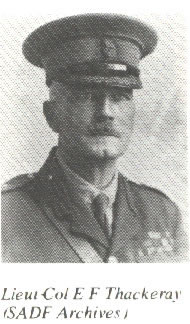
|
He fought alongside his men as a private would, with rifle, bayonet and hand grenades.
At Delville Wood the volunteer 1st South African Infantry Brigade showed what commitment meant, and their feat can never be surpassed.
Because the Brigade was comprised of volunteers, no South African military unit carries the battle of Delville Wood as a battle honour on a regimental colour, although it is known as the bloodiest conventional battle ever fought by South Africans.
There were four South African citations for the Victoria Cross but only one South African VC was won and Colonel Thackeray although recommended for a VC, was awarded the DSO.
The Victoria Cross, the highest award for Valour was awarded to William Fredrick Faulds aged 21.“18th-20th July 1916 |
| |
After the war, Delville Wood was purchased by the famous author of “Jock of the Bushveld” Sir Percy Fitzpatrick, for ₤1000 and in 1920 the South African government purchased it from him for South Africa.
An interesting situation developed when rabbits started breeding up in the protected wood and this resulted in poachers hunting the rabbits. The French gendarmes were not allowed on South African soil, so France repurchased the land for one franc and then granted South Africa the hallowed land in perpetuity for memorial purposes.
Sadly military authorities are almost unanimous in their opinion that the losses incurred by the South African Infantry Brigade at Delville Wood were in vain. The general consensus is that the defense and battle of Delville Wood, served no strategic purpose at all, nor in fact did the Somme offensive, of which Delville Wood played a part. |

|
The Delville Wood Memorial was designed by Sir Herbert Baker, with the sculpture by Alfred Turner. It consists of a flint and stone screen either side of an archway, with a shelter at each end of the screen.
On top of the arch is a bronze statue of two men and a war horse by Turner.
Two male figures, symbolise Castor and Pollux, and represent the two white races English speaking and Afrikaans speaking of South Africa, with inscriptions in both English and Afrikaans.
In just this one grave, Kaapsche Hoop can provide visitors with an insight into our country’s history and provide a reason to walk the fields of Kaapsehoop. In a years time it will be the 100th anniversary of the Battle of Delville Wood. |
| |
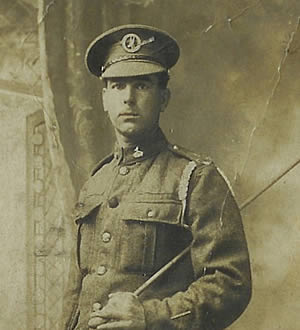
|
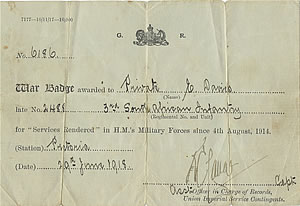
War badge award certificate to Evan Davies,
left and his badges right
3rd South African Infantary Battalion
issued 29th June 1918
|
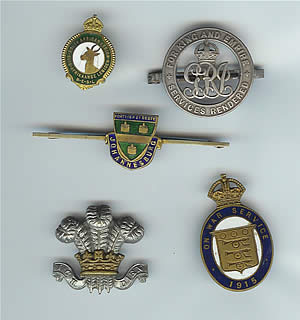
|
I was contacted by Colleen de Klerk, Evan Davies' grand daughter with this shortened message.
"I was doing some surfing on Google in connection with my grandfather Evan Davies and to my great surprise came across your article on finding his grave in the Kaapsche Hoop cemetery. He enlisted in the Explosives Force in 1915 in Pilgrims Rest and went off to war. Looking further on the internet I also came across a newsletter by the MOTHS and found that a ceremony was held in July last year honouring our Grandfather. That brought a lump to my throat and tears to my eyes – if only we could have known and been there. You ask whether anyone has photo of Evan Davies and to this I can answer YES. "
Gilda Biassoni his other grand daughter sent me the photos above and further information.
"My granddad was born 5 Sep 1884 in Tredegar Monmouth, Wales.
Married 7 September 1918, in the Wesleyan Church, Pilgrims Rest, South Africa.
Died 7 February 1964 in Kaapsehoop, his wife (Alice Brink, was his second wife) found him peacefully dead with a cup of tea in his hand, perhaps heart failure)
His first wife, ELIZABETH MAUD FOSSE (My grandmother) was born 25th April 1898 in Llantrisant, Glanmorgan, Wales.
They had two daughters, my mother MARGARET ELIZABETH (PEGGY) born in Pilgrim's Rest 1919 and her sister GWYNVILLE MARY also born in Pilgrim's Rest, 1920.
Thank you so much for the article of the parade at Kaapsehoop cemetery. We were so touched by this. I am so sure that my granddad would have been so proud to have seen this wonderful tribute. We will certainly try our utmost to be in Kaapsehoop for this year's Parade.
Thanks you so much for honoring our granddad, he was a beautiful, warm and very gentle person".
 FOR PHOTOS OF THE FAMILY AT THE DELVILLE WOOD PARADE FOR PHOTOS OF THE FAMILY AT THE DELVILLE WOOD PARADE
|
|
|
|
|




















